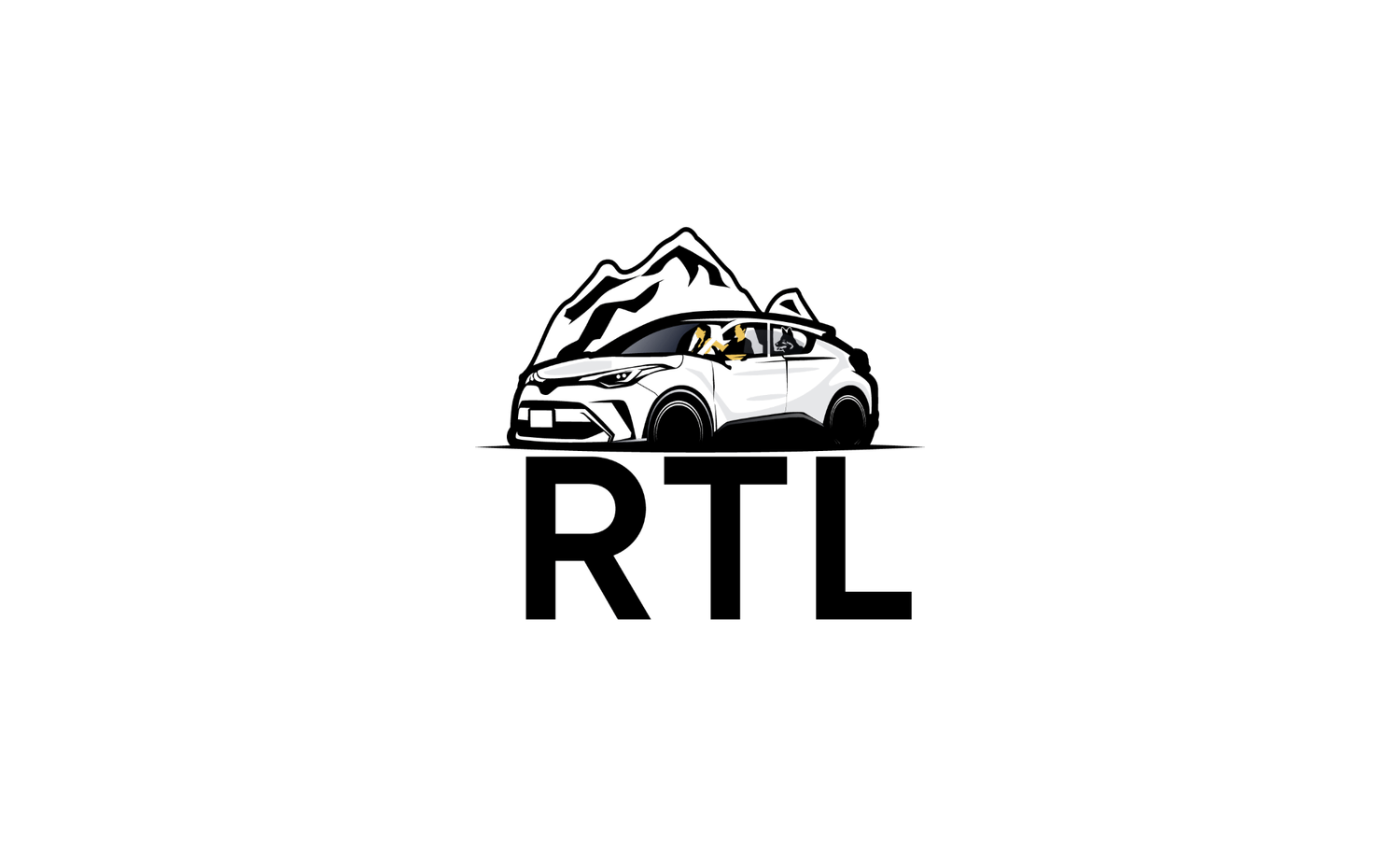Should You Get the ROVE Dash Cam for Your Road Trip?
If you’re gearing up for an RV trip, cross-country adventure, or your next big road trip and want to capture the journey, you’ve probably already asked yourself: Should I buy a ROVE dash cam? Or just use a GoPro or phone?
We recently picked up the ROVE R2-4K PRO Dash Cam as part of our road trip setup, and we’ve been testing it out for upcoming adventures. In this post, we’re sharing what drew us to this model, what it’s like to use it so far, how it compares to tools like GoPros, and even how you can turn dash cam footage into lasting memories.
Whether you’re looking for peace of mind on the road or new ways to share your travel stories, here’s everything you need to know about the ROVE Dash Cam.
Why We Chose the ROVE R2-4K PRO Dash Cam
Let’s start here: not all dash cams are created equal. We were looking for something that could:
Record high-quality video of our drives
Handle all kinds of weather
Work easily in our car
Be simple to set up and use
The ROVE R2-4K PRO checked all those boxes. Jon originally researched it for safety, but I quickly realized it’s also perfect for documenting those wow moments on the road… whether it’s a herd of bison in Yellowstone, an epic sunset in Utah, or driving Highway 1 along the California coast.
Key Features of the ROVE R2-4K PRO
Here’s what makes the Rove Dash Cam stand out for road trippers:
Ultra HD 4K Video Recording: Crisp, clear video that actually does those mountain views justice.
Built-In GPS: Your videos automatically log location and speed, which is amazing for remembering where that perfect stretch of road was!
WiFi Connectivity + ROVE App: Watch and download footage directly to your phone without needing a computer.
Super Night Vision: If you’re driving into a national park before sunrise or leaving late, your footage won’t be grainy or useless.
Loop Recording + G-Sensor: Automatically saves footage if there’s an impact. (Ideal for both safety and travel memories.)
Voice Guidance + Touchscreen: Easy to set up, easy to use—no tech degree required.
Pros and Cons of the ROVE Dash Cam for Travelers
While we haven’t logged thousands of miles with it yet, our early impressions are solid. Here’s what stands out:
✅ Pros:
Plug-and-play setup — even if you’re not techy.
Wide-angle lens (150°) captures more of the scenery than a phone mounted on your dash.
Excellent audio so you can hear your reactions or music while driving. (Might also be a con.)
Compact and reliable design that doesn’t clutter the windshield.
Affordable compared to a GoPro or drone setup.
❌ Cons:
No rear-facing camera included (can be added, but it’s extra).
Only records while car is on unless you install hardwiring kit for parking mode.
Not as flexible as a GoPro for walking shots or off-vehicle footage.
Dash Cam vs. GoPro vs. Phone: What’s Best for Documenting a Road Trip?
Whether you're driving coast to coast or spending a weekend in the mountains, your gear setup can make a huge difference in how you remember the journey. Here’s a deeper look at the pros and cons of each.
Layman's Take: Which One Should You Use?
We like to think of it like this:
The dash cam is your built-in co-pilot. It’s recording everything you drive past without you even thinking about it. You’ll catch the wildlife crossing the road, the surprise waterfall, the scenic byway you didn’t know you’d love. This is especially useful in national parks like Yellowstone, where you’re almost guaranteed to get caught in a bison jam.
The GoPro is your adventure buddy. Want to mount it to your kayak? Hike with it? Clip it to your backpack and make a timelapse of your trail? This is the one. It’s great for creating dynamic content, but it takes more effort.
Your phone is your storyteller. It’s great for capturing the in-between moments—campfire chats, dog cuddles, that perfect latte at the roadside diner. But you’ll want to back up often and maybe put it in airplane mode sometimes to save battery.
What to Do With All That Footage
Once you’ve got hours of gorgeous highway and mountain pass footage… what next?
Here are a few ideas!
🎮 Create a Travel Montage
Use free tools like iMovie, CapCut, or DaVinci Resolve to splice together your favorite clips into a cinematic road trip montage. Add a song that matches the vibe and share it with friends or post it to YouTube.
📱 Share Clips on Social Media
Short clips (10–30 seconds) work great for Instagram Reels, TikToks, or even Facebook travel albums. The ROVE app lets you download clips to your phone and trim them easily.
📍 Use Footage for Travel Logs
Because the ROVE embeds GPS data, you can show your route and the footage, perfect for travel blogs or journaling your route later.
💼 Save for Memories (or Insurance)
Even if you don’t want to share publicly, these clips make great mementos. Bonus: they can also help in case of road incidents.
Final Verdict: Is the ROVE R2-4K PRO Worth It?
If you’re hitting the road and want to capture your travels without juggling your phone or fancy camera, the ROVE R2-4K PRO is a strong option.
For around $100–$150, it gives you:
Peace of mind on the road
Beautiful 4K footage of your journey
An easy, no-fuss way to relive and share your adventures
It’s not a replacement for a GoPro or drone, but it’s a solid part of the travel documentation toolkit, especially if you spend a lot of time driving scenic roads like we do.
FAQs About the ROVE R2-4K PRO Dash Cam
Q: Does the ROVE R2-4K PRO Dash Cam record while the car is off?
Only if you install the optional hardwiring kit. By default, it records when the engine is on. For 24/7 parking surveillance, the hardwire kit is required.
Q: What size microSD card do I need?
ROVE recommends using a Class 10, U3-speed microSD card up to 512GB. (We went with 256GB to start.) Be sure to format it in the camera before first use. (You’ll want to purchase this separately, and heads up: ROVE recommends their ROVE SD card.)
Q: How do I view or share my dash cam footage?
You can either remove the SD card and plug it into a computer or use the ROVE app to connect via Wi-Fi and transfer clips to your phone.
Q: Does it come with GPS?
Yes. GPS is built in and automatically logs your speed and location to each video clip. You can turn this feature off if preferred.
Q: Is installation difficult?
Not at all. It comes with a suction mount and a power cable that plugs into your 12V socket. Setup took us under 10 minutes.
Q: Can it be used in extreme weather?
The ROVE R2-4K PRO is rated to handle temperatures from -22°F to 176°F. It’s designed to hold up in both summer heat and winter conditions. We have cabins outside Yellowstone National Park and visit year-round, using the ROVE Dash Cam in all seasons.
Q: Can I add a rear camera later?
Yes! ROVE sells a compatible rear camera that can be added separately if you want front and rear coverage.
Q: Will it block my view while driving?
Nope. It's compact and typically mounted behind the rearview mirror, so it stays out of your line of sight.
Q: Which ROVE Dash Cam should I get?
Here’s an overview of the ROVE dash cams:
R2-4K: Great for those seeking a reliable, budget-friendly front-facing dash cam.
R2-4K PRO: Offers enhanced features like faster Wi-Fi and better night vision for those wanting a superior single-camera experience. (This is what we purchased.)
R2-4K DUAL: Ideal for users needing both front and rear coverage, such as daily commuters or those concerned about rear-end incidents.
R3 3-Channel: Perfect for those wanting comprehensive coverage, including the vehicle's interior. Could be fun for documenting group trips!
Where to Buy It
👉 Check Current Price on Amazon
Heads up: As an Amazon Associate, we may earn a small commission if you make a purchase through this link—at no extra cost to you. It helps support our content and gear testing, and we thank you for being here!
If you're planning your next road trip, don’t leave without this little sidekick on your windshield. You’ll thank yourself later when you’re sipping coffee at home, watching the sunrise you drove through three states to see.
Related Posts








